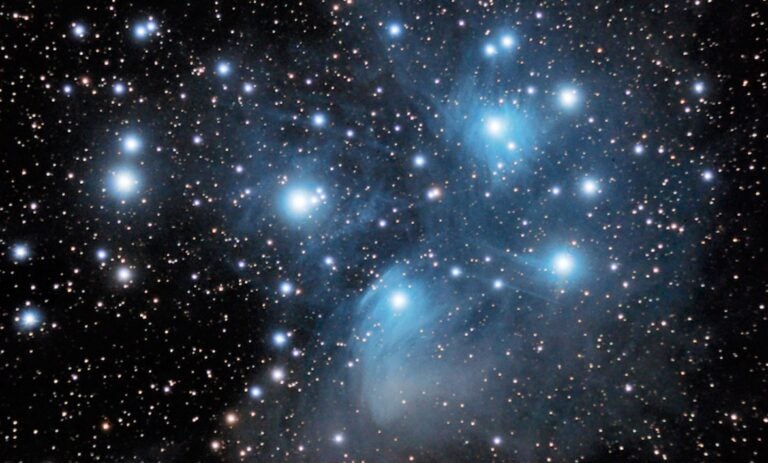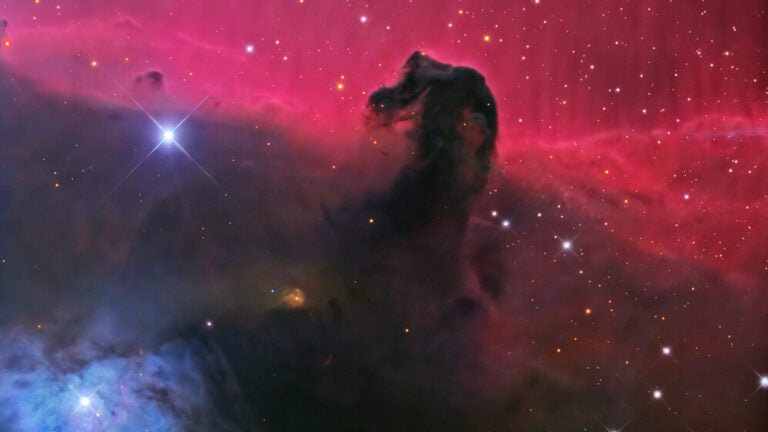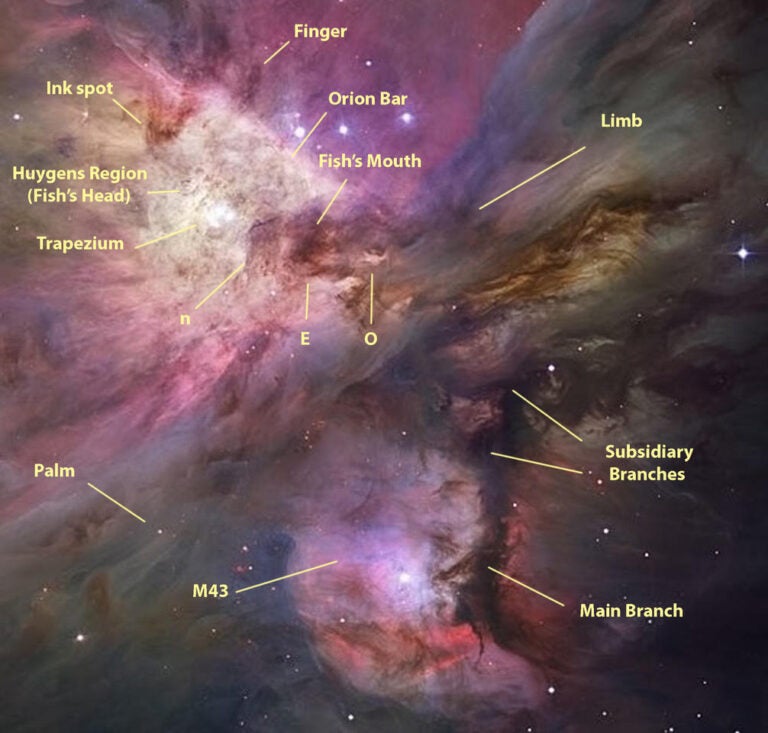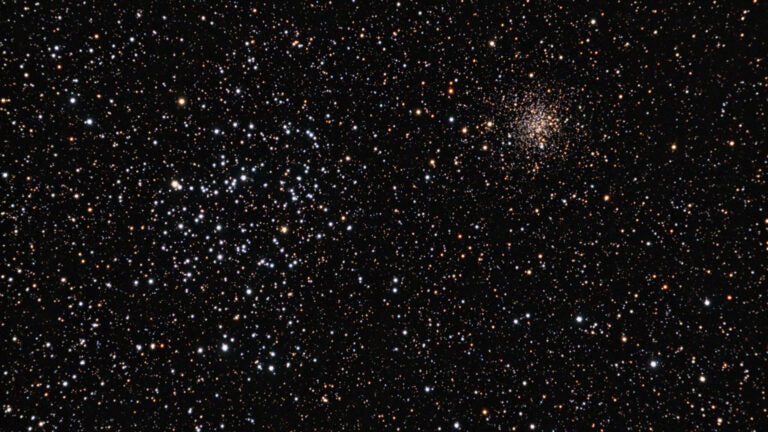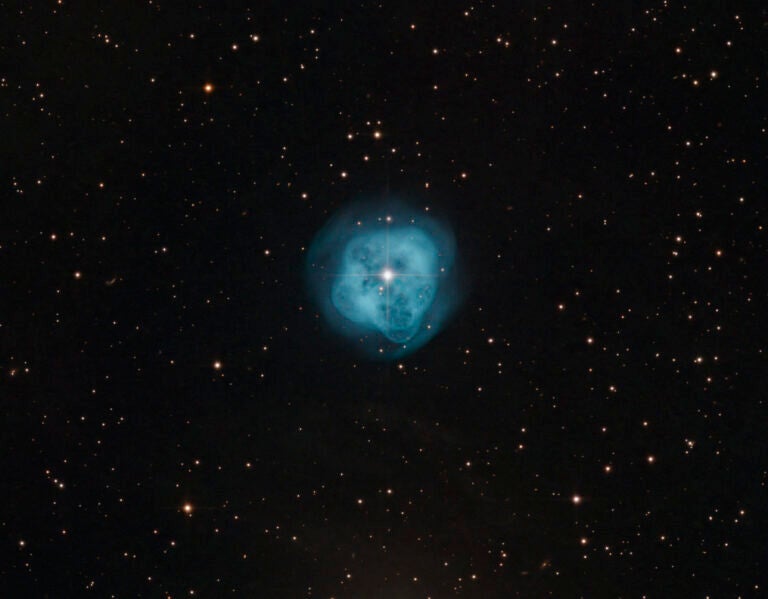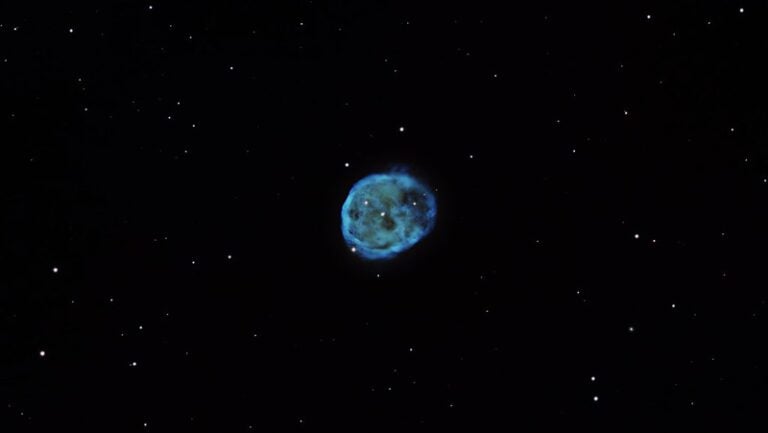We all know that telescopes are time machines. They peer into the past. We perceive the light from objects, not the objects themselves, and this light takes time to arrive. That’s why some people say, “The stars we see probably don’t exist anymore!”
I like it when folks express that view, even though it’s wrong. They are correctly grasping the huge distances of space, that light is not infinitely fast, and that stars can die. Their error is simply that naked-eye stars are nearer than 3,000 light-years, and a few millennia of light-travel-time is an eye blink compared to their multibillion-year lives. What are the chances a star has died in the few centuries its light is en route? Do the math, and the odds are 200 to 1 that all of the 6,000 naked-eye stars still exist. So it’s very likely our star buddies like Rigel continue to shine at this moment, even if a shaky handful like Eta Carinae seem ready to pop into supernovae.
But many other celestial entities are not really there. Energetic quasars seem to pepper the cosmos, but few, if any, still exist. They are ghosts. These long-gone relics from a more violent era are so distant that their light continues to travel on like disembodied zombies. Their images are fading sepia prints, bringing us news of the bygone universe.
It’s not distance alone that creates illusory objects. Textbooks speak of black holes forming and speculate about the singularities at their centers. The reality is that no black hole or singularities ever form. Here the culprit is the warping of space-time, which places them in what Albert Einstein called a “different reference frame” — induced by off-the-scale gravity. A collapsing heavy star may “see itself” imploding into a hyper-dense singularity with properties beyond the ken of today’s physics. However, everyone outside this putative black hole’s event horizon — meaning the entire universe, us included — instead witnesses its collapse slowing and then permanently freezing. No complete black hole or singularity ever materializes, as this would require infinite time in our reality. We instead view a frozen star that never shrinks further.
It isn’t just exotic items like quasars and black holes that aren’t really there. Thanks to the ever-accelerating expansion of space, distant galaxies are not even remotely located where they seem to be, and their contents would be unrecognizable from what we might observe today. Beyond them, other galaxies are “not there” for a different reason: Their light will never arrive here. We must forever be deprived of the slightest clue about this vast silent majority of the cosmic inventory. We stare at the blackness between the stars and perceive emptiness, yet an unseen richness lurks beyond like some fabled El Dorado.
seem to pepper the
cosmos, but few, if
any, still exist.
This colorful phenomenon has only been around for the last 1 percent of Earth’s history. They first came into existence when animals developed color vision. For we do not perceive colors that are already “out there” — there are no colors “out there.” Instead, we personally create them in response to invisible magnetic/electrical stimulations. As Roy Bishop says in the superb Observer’s Handbook from the Royal Astronomical Society of Canada, rainbows occur entirely “within our skull.”
The “no reflection” business bothers some people. Yet it’s true: If you see a rainbow, you can’t also see its reflection, even if a pond or mirror is correctly positioned. Any seeming reflection will be that of an entirely different rainbow, and may have dissimilar properties such as less blue or greater vividness. So while we can all see the same tree or traffic light, and view it from various angles, here there are no other possible viewpoints or angles because it’s not a real object.
One quick proof is that in nature, only a sphere always appears round from every viewing angle. A rainbow is not a sphere. Yet it does indeed look perfectly round no matter what. The solution to this paradox is that it cannot be real.
And finally, there’s the endless realm of visual phantoms and optical illusions. Because the Red Planet is now at its closest point to Earth for the year, let’s recall the “canals” that once crisscrossed its surface — or so it seemed. They presumably carried water for a martian civilization that has proven equally imaginary.
It’s a funny old universe. It has real things that cannot be seen, like love and neutrinos and dark matter. Yet, conversely, it also has dramatic-looking entities that lack any physical existence at all.
We’ve awakened in a hall of mirrors, where the incomprehensible quantum land of the tiny extends in some fascinating ways to the edgeless boundaries of our telescopes. No, it’s not quite an immense mirage. It’s simply a strange universe.
Contact me about my strange universe by visiting http://skymanbob.com.


